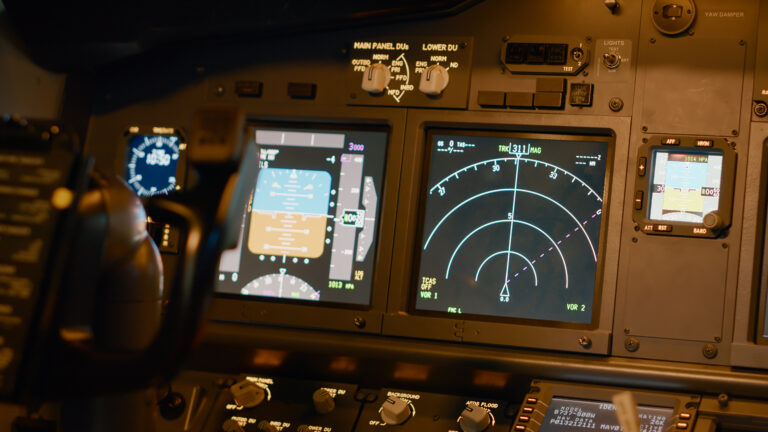What is RTLS?
Defining Real-Time Locating Systems
A Real-Time Locating System (RTLS) is a sophisticated technology designed to automatically track and identify the location of objects or individuals in real time within a confined area. This technology often employs wireless tags attached to assets or people and fixed reference points to determine precise locations. By delivering granular live location data, RTLS has become a cornerstone for industries such as manufacturing, healthcare, logistics, and retail, significantly improving asset visibility and operational efficiency.
RTLS is not just about tracking; it’s about creating actionable insights that drive smarter decision-making. By integrating RTLS into their operations, businesses are achieving unprecedented levels of efficiency, security, and productivity, adapting to the complexities of today’s dynamic environments.
How RTLS Works: Key Technologies and Components
- RFID Tags: These versatile tags, which can be either active (battery-powered) or passive (powered by a reader), emit signals carrying unique identifiers that relay real-time location information. Active tags are ideal for long-range applications, while passive tags suit cost-sensitive projects. RFID remains a cornerstone technology within RTLS systems due to its scalability and effectiveness in both indoor and outdoor environments.
- Bluetooth Low Energy (BLE): BLE technology facilitates proximity detection and location tracking using low-power Bluetooth beacons and tags. BLE is commonly used for indoor positioning in industries like retail and healthcare, where moderate accuracy and energy efficiency are critical.
- Ultra-Wideband (UWB): UWB provides exceptional precision, achieving location accuracy within centimeters. By utilizing a broad spectrum of radio frequencies, UWB minimizes interference and is ideal for environments where accuracy is paramount, such as manufacturing floors and high-density facilities.
- Wi-Fi-Based Systems: Wi-Fi RTLS systems leverage existing wireless infrastructure to track assets by analyzing signal strength and triangulating positions. This cost-effective solution is well-suited for offices, educational institutions, and facilities with robust Wi-Fi networks.
- Infrared (IR): Infrared RTLS systems use light signals emitted by tags to communicate with receivers. Although limited by line-of-sight requirements, IR excels in controlled environments like hospitals and laboratories, where precise location tracking is essential.
- GPS (Global Positioning System): GPS technology enables location tracking across vast outdoor areas, making it indispensable for logistics, transportation, and fleet management. While GPS is less effective indoors, it is often combined with other RTLS technologies like RFID and UWB to provide seamless indoor-outdoor tracking solutions.
- Fixed Reference Points: These strategically placed devices, such as antennas or readers, receive signals from tags and relay the data to a centralized system. By capturing and transmitting this data, reference points ensure consistent and accurate location tracking throughout the facility.
- Real-Time Data Processing: Centralized software platforms serve as the brain of RTLS systems, processing raw data from various technologies and converting it into actionable insights. These insights are displayed via user-friendly dashboards, alerts, and reports, enabling organizations to monitor asset movements, predict maintenance needs, and optimize workflows effectively.
The Origins of RTLS
The Military Roots of RTLS Technology

The roots of RTLS can be traced back to advancements in radar technology during World War II. Radar systems were initially developed to detect and track approaching aircraft, revolutionizing military defense strategies. This pivotal technology laid the foundation for modern real-time tracking systems.
The British IFF System: The First Active RFID Application
In the 1940s, the British military introduced the first Identify Friend or Foe (IFF) system, utilizing active RFID technology to distinguish allied aircraft from enemy planes. This groundbreaking innovation not only enhanced battlefield strategy but also established the foundational principles for RTLS.
Early Commercial Applications in Healthcare

The first commercial RTLS installations emerged in the early 1990s within U.S. healthcare facilities. These systems leveraged infrared technology to track medical equipment and staff, marking a transformative moment in the adoption of RTLS beyond military applications. Hospitals utilized this technology to improve equipment availability, enhance workflow efficiency, and elevate patient care standards.
The Coining of RTLS in 1998
The term Real-Time Locating System (RTLS) was officially coined in 1998 during the ID EXPO trade show. Visionaries like Tim Harrington (WhereNet), Jay Werb (PinPoint), and Bert Moore (AIM) introduced the term to describe systems that combined active RFID capabilities with real-time location tracking. This marked the transition of RTLS from niche military applications to widespread commercial use. At this event, groundbreaking radio-based RTLS systems were demonstrated, setting the stage for future innovations.
Evolution of RTLS Technology
Advancements in RFID and Wireless Communication
- Transition from Infrared to Radio Frequency Systems: Early RTLS relied heavily on infrared technology, which required direct line-of-sight for effective tracking. The shift to radio frequency systems removed these limitations, enabling more flexible and scalable solutions.
- Integration with IoT for Enhanced Capabilities: The advent of the Internet of Things (IoT) revolutionized RTLS by enabling interconnected devices to share real-time data. This integration enhanced system capabilities, allowing businesses to gain deeper insights and improve predictive analytics.
Expanding RTLS Applications Across Industries
- Asset Tracking in Manufacturing and Warehousing: By providing precise real-time data, RTLS has optimized inventory management, minimized stockouts, and streamlined production workflows.
- Patient and Staff Monitoring in Healthcare: RTLS ensures that critical equipment is available when needed, improves patient scheduling, and enhances staff coordination, ultimately boosting healthcare outcomes.
- Real-Time Operational Insights for Modern Businesses: RTLS systems empower businesses with visibility into asset movements and usage patterns, enabling data-driven decision-making and process optimization.
Key Milestones in RTLS Development
First Commercial RTLS Installations
In the early 1990s, RTLS was adopted in U.S. hospitals to track high-value medical equipment using infrared signals. These early installations demonstrated the practical benefits of RTLS, setting a precedent for its use in other industries.
The Emergence of Intelligent RFID Tags and More Capable RFID Readers
Intelligent RFID tags introduced advanced features, including periodic broadcasting of location data, activation upon reader signal, and environmental sensing to monitor conditions like temperature and humidity. In addition, RFID Reader technology improvements allowed for the granular tracking of assets using cheaper passive RFID tags, increasing this technology’s reach by lowering costs.
Modern RTLS Innovations
- Predictive Analytics in Real-Time Tracking: By incorporating smart reporting systems and software, RTLS systems can now predict equipment failures, optimize resource allocation, and provide actionable recommendations for process improvements.
- Scalability for Hyperscale and Colocation Facilities: Modern RTLS solutions are designed to meet the demands of large-scale operations, ensuring seamless integration and scalability for growing businesses.
The Impact of RTLS on Modern Industries
Transforming Asset Management
RTLS provides unparalleled real-time visibility into asset locations, enabling businesses to reduce asset loss, improve utilization rates, and enhance overall inventory accuracy. This is particularly critical in industries such as logistics and manufacturing, where mismanaged assets can lead to costly disruptions.
Improving Operational Efficiency
Automating tracking processes with RTLS eliminates manual labor, minimizes human error, and supports lean operations. This not only saves time and resources but also ensures that businesses can adapt quickly to changing demands.
Enhancing Safety and Compliance
RTLS is a game-changer for safety and compliance, particularly in high-stakes environments like healthcare and logistics. By monitoring hazardous materials and ensuring secure access, RTLS helps businesses maintain compliance with industry regulations while protecting their workforce.
The Future of RTLS
Emerging Trends in Real-Time Locating Systems
- Integration with AI, IoT, and Machine Learning: Emerging technologies are making RTLS systems smarter and more efficient, enabling real-time insights, automated decision-making, and predictive maintenance.
- Enhanced Environmental Monitoring: Future RTLS systems may incorporate advanced sensors for monitoring environmental factors like air quality, further broadening their applications.
Challenges and Opportunities in RTLS Adoption
- Overcoming Scalability and Privacy Concerns: As RTLS becomes more widespread, addressing challenges related to system scalability and data privacy will be essential to unlocking its full potential.
- Expanding Industry Applications: RTLS continues to find new use cases in industries such as retail, entertainment, and urban planning, highlighting its versatility and adaptability.
RTLS and the Next Generation of Technology
The next wave of RTLS innovation will likely focus on seamless integration with other technologies, creating interconnected systems that provide unparalleled efficiency, accuracy, and value to businesses.
Conclusion
From its origins in military applications to its current role in transforming industries, RTLS has undergone remarkable evolution. By leveraging advanced technologies like RFID, IoT, and AI, RTLS delivers unparalleled benefits in asset visibility, operational efficiency, and safety. As businesses continue to adopt and refine RTLS solutions, they position themselves at the forefront of innovation, ready to tackle the challenges of a dynamic and competitive landscape.
